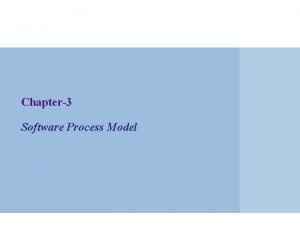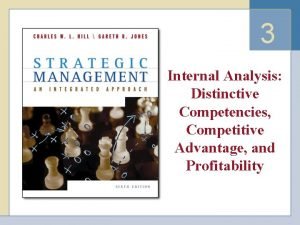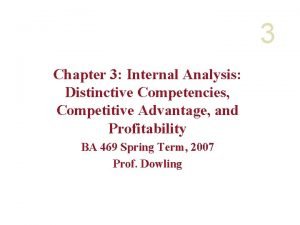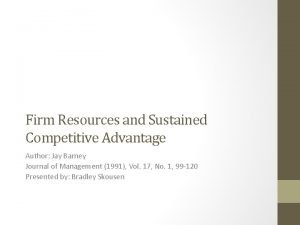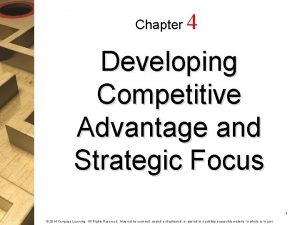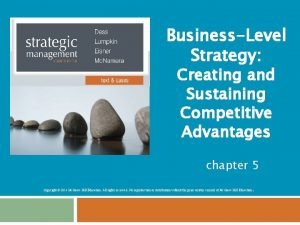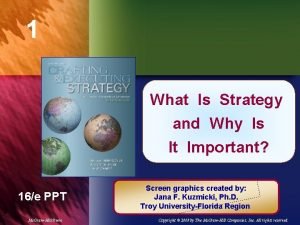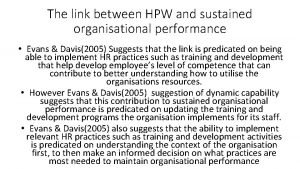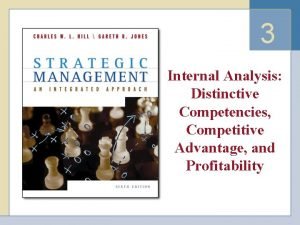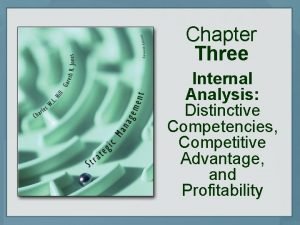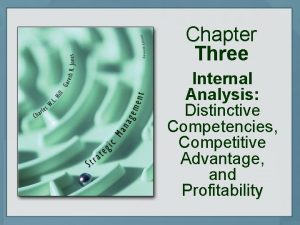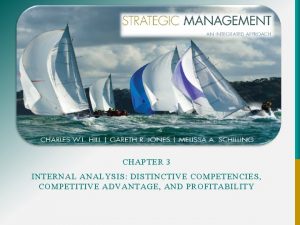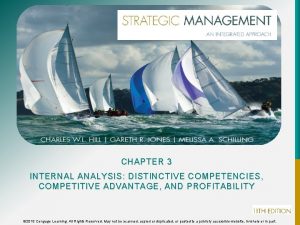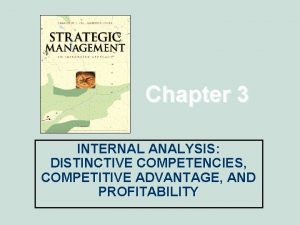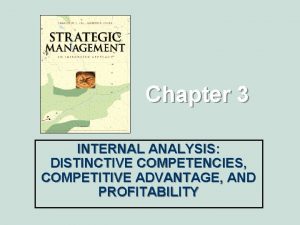Chapter3 Internal Analysis Distinctive Competencies Competitive Advantage and












- Slides: 12

Chapter-3 Internal Analysis: Distinctive Competencies, Competitive Advantage, and Profitability

Lesson Learning Objectives The students will be able to know about the distinctive competencies and competitive advantages. They will also know about the roles of resources and capabilities and profitability and value creation strategy.

Lesson Contents 1. Distinctive Competencies and Internal Analysis 2. Competitive Advantage 3. A Three-Step Process 4. Distinctive Competencies and Role of Resources and Capabilities 5. Competitive Advantage, Value Creation, and Profitability 6. Value Creation per Unit 7. Comparing Toyota and General Motors 8. The Value Chain

ü The purpose of internal analysis is to pinpoint the strengths and weaknesses of the organization. ü Strengths lead to superior performance. Weaknesses lead to inferior performance. Internal Analysis includes an assessment of: ü Quantity and quality of a company’s resources and capabilities ü Ways of building unique skills and company-specific or distinctive competencies. Building and sustaining a competitive advantage requires a company to achieve superior: ü Efficiency ü Innovations ü Quality ü Responsiveness to customers

Competitive Advantage ü A firm’s profitability is greater than the average profitability for all firms in its industry. Sustained Competitive Advantage ü A firm maintains above average and superior profitability and profit growth for a number of years. The Primary Objective of Strategy is to achieve a Sustained Competitive Advantage which in turn results in Superior Profit and Profit Growth.

A Three-Step Process 1. Understand the process by which companies create value for customers and profit for themselves. ü Resources ü Capabilities ü Distinctive competencies 2. Understand the importance of superiority in creating value and generating high profitability. ü Efficiency ü Quality ü Innovation ü Responsiveness to Customers 3. Analyze the sources of the company’s competitive advantage. ü Strengths – that are driving profitability ü Weaknesses – opportunities for improvement

Distinctive Competencies and Role of Resources and Capabilities Resources ü Tangible (physical) and intangible (non-physical) ü Allow a company to create value for its customers ü Must have skills to take advantage of the resources ü Firm-specific and difficult-to-imitate resources as well as valuable resources that create strong demand for a company’s products lead to distinctive competencies Capabilities ü Coordinating resources & putting to productive use ü Skills reside in the organization’s rules, routines and procedures ü Product of its organization, processes & controls ü Firm-specific capabilities to manage its resources lead to distinctive competencies

Competitive Advantage, Value Creation, and Profitability How profitable a company becomes depends on three basic factors? 1. Value or Utility the customer gets from owning the product. 2. Price that a company charges for its products. 3. Costs of creating those products. Consumer surplus is the “excess” utility a consumer captures beyond the price paid. Basic Principle: the more utility that consumers get from a company’s products or services, the more pricing options the company has.

Value Creation per Unit

Comparing Toyota and General Motors Superior value creation requires that the gap between perceived utility (U) and costs of production (C) be greater than that obtained by competitors.

The Value Chain A company is a chain of activities for transforming inputs into outputs that customers value –including the primary and support activities.

Thank you for you nice cooperation Any Question? ? ?
 Model couples the iterative nature of prototype
Model couples the iterative nature of prototype Chapter3
Chapter3 Distinctive competencies
Distinctive competencies Distinctive competencies
Distinctive competencies Chapter 2 competitiveness strategy and productivity
Chapter 2 competitiveness strategy and productivity Pharmacology introduction
Pharmacology introduction Slow cycle market
Slow cycle market Which market is the least competitive
Which market is the least competitive Barney 1991 firm resources
Barney 1991 firm resources Developing competitive advantage and strategic focus
Developing competitive advantage and strategic focus Creating and sustaining competitive advantage
Creating and sustaining competitive advantage A company strategy and its quest for competitive advantage
A company strategy and its quest for competitive advantage Link between hpw and sustained organisation performance
Link between hpw and sustained organisation performance
